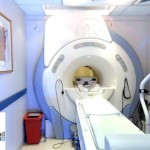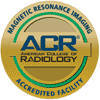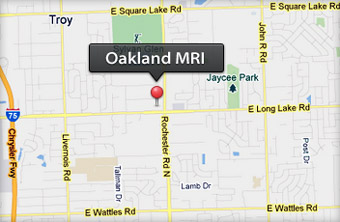 Patients are often exposed to cancer-causing radiation for little medical reason, a Consumer Reports investigation finds.
Patients are often exposed to cancer-causing radiation for little medical reason, a Consumer Reports investigation finds.
When James Duncan, M.D., a radiologist at Washington University in St. Louis, experienced intense pain in his abdomen in 2010, he rushed to a local emergency room. His doctors suspected kidney stones, but they wanted to be sure, so they ordered a CT scan. Duncan remained motionless as the machine captured a detailed, 3D image of his abdomen. He knew that the test was done when the machine stopped whirring. So he was surprised when the scanner kicked back on after a few seconds.
“I later learned that the technician running the CT mistakenly believed that the first scan didn’t include the top of my kidneys, and decided to acquire more images ‘just to be sure,’ ” Duncan says. “The irony: I was getting ready to give a lecture on reducing radiation exposure from medical imaging. And there I was, reluctantly agreeing to a CT scan and then getting overexposed.”
Duncan will never know whether that specific scan caused any long-term harm, because it’s almost impossible to link radiation exposure from any one medical test to a future illness. But like other researchers, he knows that doctors today order millions of radiation-based imaging tests each year, that many of them are unnecessary, and that the more radiation people are exposed to, the greater their lifetime risk of cancer.
X-rays have been used for almost 120 years, but the introduction of computed tomography, or CT scans, in the 1970s, was revolutionary. The new tests, which use multiple X-ray images, allowed doctors to see with unprecedented precision the inner workings of the human body, and earned the inventors of the device the 1979 Nobel Prize in medicine. Use of the tests grew quickly, rising from fewer than 3 million per year in 1980 to more than 80 million now.
But recent research shows that about one-third of those scans serve little if any medical purpose. And even when CT scans or other radiology tests are necessary, doctors and technicians don’t always take steps to limit radiation exposure.
All of that exposure poses serious health threats. Researchers estimate that at least 2 percent of all future cancers in the U.S.—approximately 29,000 cases and 15,000 deaths per year—will stem from CT scans alone. Even some standard X-rays, which expose you to much smaller amounts of radiation, can pose risks if you undergo multiple ones.
“No one says that you should avoid a CT scan or other imaging test if you really need it, and the risk posed by any single scan is very small,” says Marvin M. Lipman, M.D., Consumer Reports’ chief medical adviser. “But the effect of radiation is cumulative, and the more you’re exposed, the greater your cancer risk. So it’s essential that you always ask your doctors why they are ordering an imaging test and whether your problem could be managed without it.”
Given those risks, why are we—and our doctors—so scan-happy?
For one thing, patients aren’t necessarily aware of the danger. A new Consumer Reports survey of 1,019 U.S. adults found that people are seldom told by their doctors about the risks of CT scans and other radiology tests. It’s no surprise, then, that only 7 percent of those who had a nondental X-ray and 2 percent of those who had a CT scan thought they might have received the tests unnecessarily. And only 4 percent ever told their doctor they did not want a CT scan. “That’s worrisome,” says Lipman’s colleague at Consumer Reports, Orly Avitzur, M.D. “Patients need to take the lead on this because their doctor may not.”
Other studies show that doctors themselves often underestimate the dangers CT scans pose. Moreover, some doctors may actually have a financial incentive to order the tests.
“Health care professionals shouldn’t have the right to image children or adults unless they first show that they can do it safely and appropriately, and most of the time in this country, that’s not happening,” says Stephen J. Swensen, M.D., medical director at the Mayo Clinic in Rochester, Minn. “If the scan isn’t necessary or emits the wrong dose of radiation, the risks far outweigh the benefits.”
Radiation risk 101
CT emits a powerful dose of radiation, in some cases equivalent to about 200 chest X-rays, or the amount most people would be exposed to from natural sources over seven years. That dose can alter the makeup of human tissue and create free radicals, molecules that can wreak havoc on human cells. Your body can often repair that damage—but not always. And when it doesn’t, the damage can lead to cancer.
Cancers from medical radiation can take anywhere from five to 60 years to develop, and risk also depends on age and lifestyle. That’s why scientists struggled in early attempts to quantify the danger of medical radiation. Until recently, researchers often relied on evidence from the atomic bomb attacks on Hiroshima and Nagasaki. But now research shows that today’s medical patients are being harmed, too.
New evidence comes from a 2013 Australian study that looked at more than 680,000 people who had CT scans as children and compared them with some 10 million children who did not have a CT scan. The researchers determined that for every 10,000 young people scanned, 45 would develop cancer over the next 10 years, compared with 39 cancers among 10,000 people not screened. Overall, people scanned had a 24 percent increased cancer risk, and each additional scan boosted risk an additional 16 percent. Children who had one before the age of 5 faced a 35 percent spike in cancer risk, reflecting the fact that young bodies are more vulnerable to radiation.
Other researchers estimate that for every 1,000 children who have an abdominal CT scan, one will develop cancer as a result. And a 2012 study that looked at almost 180,000 British children linked CT scans to higher rates of leukemia and brain cancer.
“All too often children are receiving adult-sized doses of radiation, which is many times the amount they need,” Swensen says. “The dose directly increases the risk of leukemia or a solid tumor. And that’s not regulated today.”
Radiation poses a smaller risk to older people, in part because there is less time for cancer to develop in them, explains David Brenner, Ph.D., director of the Center for Radiological Research at Columbia University. But, he points out, adults actually receive far more scans than children do, “so the bigger issue is actually with adults.” Research also suggests that, contrary to expectations, the risk of radiation-induced cancer, notably of the lungs, doesn’t decline as we age.
One scan leads to another
One of the insidious ways that unnecessary CT scans increase risk is that a single CT test often leads to another, then another. A disturbing example of that dangerous cascade was featured in an article in the September 2014 issue of the Journal of Patient Safety, co-authored by John Santa, M.D., medical director of the Consumer Reports Health Ratings Center.
An 11-year-old girl received a CT scan because of possible appendicitis. That was the first mistake: An ultrasound, which does not emit radiation, is the best initial test in such situations. The second error occurred when her CT showed a normal appendix but her doctors noted a spot on one lung and decided that it warranted a follow-up CT. Such incidental findings are so common doctors have a name for them: incidentalomas.
Expert advice is to ignore the vast majority of those results because slight abnormalities seen on scans are very common but rarely harmful. Yet many doctors find the urge to order follow-up tests irresistible. For the 11-year-old girl, the CT didn’t reveal a tumor or any other problem, but over the next two years her doctors recommended repeat scans of her lungs, all of which would further increase her cancer risk.
“Stories like this occur every day in the United States,” Santa and his co-authors wrote. “This unfortunate sequence of patient harm, waste, and needless anxiety could have been completely avoided with an ultrasound. None of this had to happen. None of this has to happen.”
Why there’s so much overuse
The main reasons for excessive scanning are:
Financial incentives. Overuse is caused “not just by greed and money, but that’s part of it,” says Swensen of the Mayo Clinic. Most doctors are paid by volume, he notes, so they have an incentive to order lots of tests. And many doctors have invested in radiology equipment or clinics. Such physicians order far more CT scans and other imaging tests, research shows.
Fear of lawsuits. Almost 35 percent of imaging tests are ordered mainly as a defense against lawsuits, not because of true medical need, according to a study presented at the 2011 meeting of the American Academy of Orthopaedic Surgeons.
Uninformed physicians. In a 2012 study of 67 doctors and medical providers caring for patients undergoing abdominal CT, fewer than half knew that the scans could cause cancer. In another study, only 9 percent of 45 emergency-room physicians said they knew that CT scans increased cancer risk.
Misinformed patients. Fewer than one in six patients in our survey said their doctors had warned them about the radiation risks of medical imaging. It’s not surprising, then, that many patients have mistaken assumptions about the dangers of medical radiation. For example, almost as many people in our survey (17 percent) were very concerned about magnetic resonance imaging (MRI), which doesn’t emit radiation, as were concerned about CT scans (19 percent).
Patient demand. When you or your child is in pain, it’s normal to want an imaging test to find out the cause. But that’s often not necessary or wise. Many back-pain sufferers, for example, ask their doctor for an X-ray or CT scan (and many doctors acquiesce) even though expert guidelines say that such tests are usually warranted only if the pain lasts a month or longer.
Lack of regulation. About one-third of the people in our survey assumed that laws strictly limit how much radiation a person can be exposed to during a CT scan. In fact, unlike mammography, there are no federal radiation limits for any kind of CT imaging.
There are also no national standards for the training or certification of technologists (professionals who operate the imaging machines). Some states allow almost anyone to work the equipment. The government relies on three outside accrediting organizations—the American College of Radiology, the Intersocietal Accreditation Commission, and The Joint Commission—to ensure the safety of advanced imaging facilities. But each group has different quality and safety standards.
“As you go around the country, you see all this variation in how medical imaging is being used and adherence to best practices,” Duncan says. Starting in 2016, the Centers for Medicare and Medicaid Services (CMS) plans to cut reimbursement rates if CT machines don’t have the most recent safety features. It has been reported that about one-third of the scanners now used across the country won’t meet those new CMS standards.
What you can do
Here’s our advice on what to do before you get any radiation-based imaging test:
Ask why the test is necessary. Of course, don’t turn down a test if it’s really needed. But they’re often not. So ask why the test is being done, how the results will be used, what will happen if you don’t get the test, how much radiation you will be exposed to, and whether there is a radiation-free alternative like MRI or ultrasound that could be substituted. For more, read our report “When to Question CT scans and X-rays.”
Check credentials. There’s no guarantee that the equipment will work or that the providers are skilled. But there are some indicators. Ask whether the facility is accredited by the American College of Radiology, whether the CT technologists are credentialed by the American Registry of Radiologic Technologists, and whether the person interpreting the scans is a board-certified radiologist or pediatric radiologist. Also check online to see whether the radiology professional, imaging facility, or referring physician has joined efforts to reduce the overuse of medical imaging, such as Image Gently, which focuses on children, and Image Wisely for adults.
Get the right dose for your size. The smaller or thinner you are, the lower the radiation dose you need. The circumference of your chest, hips, thigh, or waist can also change the dose. So before you get scanned, ask the person taking the test whether they’ve factored all of that into your scan.
Ask for the lowest effective dose. The strength of the radiation dose used during a CT scan can vary tremendously, even when done in the same institution and for the same medical purpose. Avoiding the highest of those doses could almost cut in half the number of future radiation-related cancers, according to a 2013 study in the journal JAMA Pediatrics.
Avoid unnecessary repeat scans. The Institute of Medicine reports that $8 billion is spent annually on repeat testing, much of it unnecessary. That often happens because doctors may prefer to get a new test rather than look at a previous one. So let your doctor know if you recently had an imaging test. To track your scans, jot down the date, facility, and ordering physician in a journal. And ask for copies of your scans to be put on a CD so that you can show them to new doctors.

